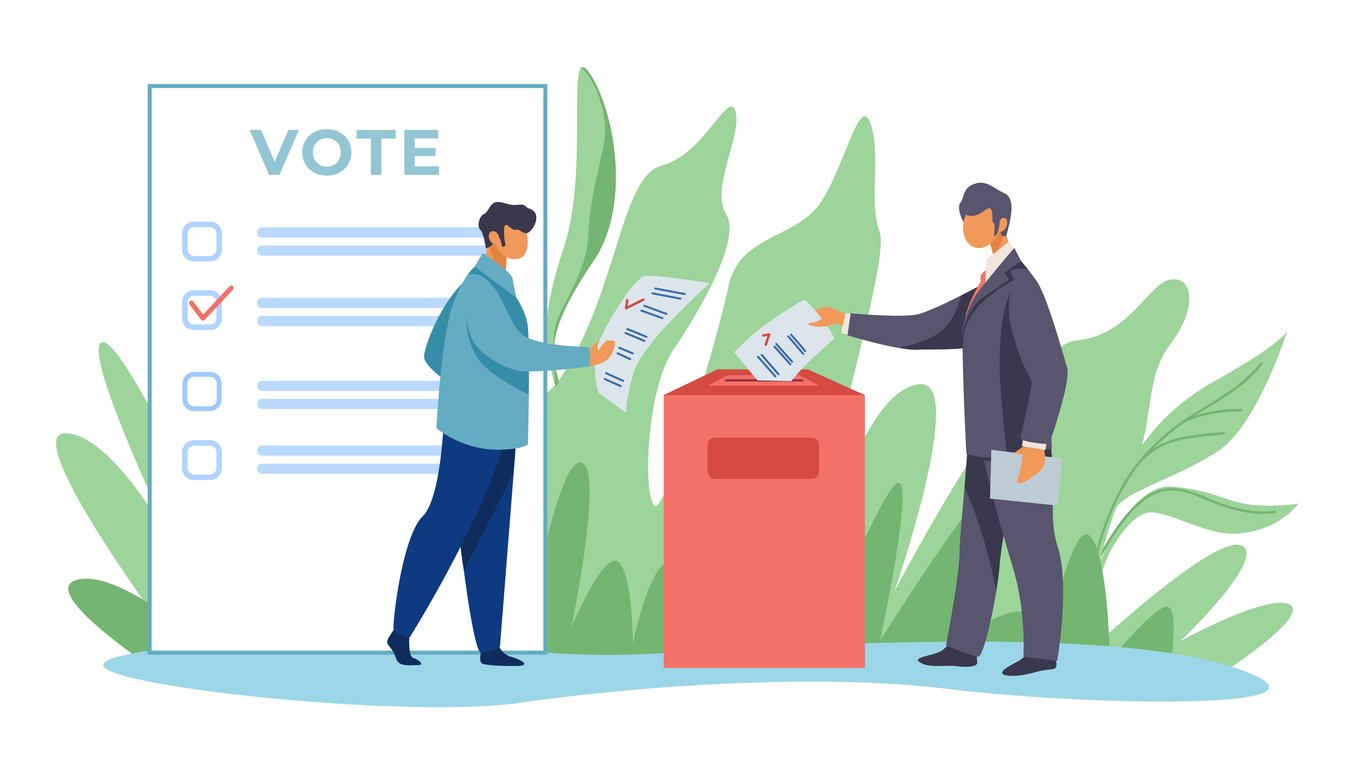What to Know About Lawmaker Messaging Before Starting an Advocacy Campaign
Advocacy campaigns have the power to influence change and create a significant impact on issues important to individuals, communities, and society at large.
While these campaigns are powerful tools for bringing attention to important cause es, they can also be complex and challenging endeavors that require a comprehensive approach to planning, strategy, and execution.
Among the many critical components of a successful advocacy campaign, one of the most important is the ability to effectively message lawmakers who hold the power to enact change. In this post, we will explore the nuances of lawmaker messaging, breaking down everything from the process of how lawmakers receive and respond to constituent messages to the best ways to reach lawmakers effectively.
How do Lawmakers Receive and Respond to Constituents' Messages and How Long Does it Take?
Lawmakers receive and respond to messages from constituents in a variety of ways. One of the most common methods is through their official website, which typically includes a contact form or email address that constituents can use to send messages. Constituents can also reach out to lawmakers through social media, phone calls, e-mail, text, or video messaging.
When a constituent contacts a lawmaker, their message is usually directed to the lawmaker's office, where staff members are responsible for reviewing and responding to the message. The response time can vary depending on the lawmaker's office and the nature of the message. Some offices may respond to constituent messages within a few days, while others may take longer.
It is worth noting that due to the high volume of messages lawmakers receive, it may take days to weeks to receive a response. In some cases, the response may be a form letter or an automated message, rather than a personal response. Additionally, the office may prioritize urgent or critical messages.
In general, lawmakers are expected to respond to their constituents' messages, as they are elected to be representatives of their constituent's interests and needs. They are also required by law to make themselves available to the public, and to provide a means for their constituents to contact them.
Who responds to constituent messages in a lawmakers staff?
The lawmaker staff who handle constituent communication are typically known as "legislative correspondents" or "case workers." These staff work in the lawmaker's district or Washington D.C office and are responsible for reviewing and responding to messages from constituents. They are also responsible for keeping track of the issues that are most important to constituents, and for relaying that information to the lawmaker.
The legislative correspondents will review the message, categorize it based on the topic, and then forward it to the appropriate department or staff member who will be able to address the concern. They will also ensure that the response is appropriate, clear, and on point. They will then send the response back to the constituent, either via email, mail, or phone call.
In general, the staff members who handle constituent communication are the primary point of contact between the lawmaker and the public. They are responsible for ensuring that the lawmaker is aware of the issues and concerns of the constituents, and for providing accurate and timely responses to constituent messages.
How many messages does a typical Senate office or Congressional office receive?
The number of messages that a typical senator or house member receives can vary greatly depending on a number of factors, such as the size of the district or state represented, the popularity of the lawmaker, and the level of public interest in a particular issue.
During a normal time, a typical Senate or Congressional office can receive hundreds or even thousands of messages per week, including emails, phone calls, letters, and social media messages.
Additionally, there are certain events that can trigger an influx of messages, such as a vote on a significant piece of legislation, or a controversial statement made by a lawmaker. In those cases, the office may receive an unprecedented number of messages in a short period of time.
It's worth noting social media has added another channel through which lawmakers receive messages. Lawmakers and their staff have to navigate a large volume of messages sent via social media, which adds to their workload.
In general, lawmakers and their staff have to manage a high volume of messages, and it can be a challenging task to respond to all of them in a timely manner. Nevertheless, lawmakers and their staff members are expected to respond to constituents' messages.
What are the most effective ways to reach a lawmaker in the senate, congress, or the president?
There are several ways to reach a government official, whether that be a senator, congressperson, or the President. With so many avenues to contact these individuals, it can be difficult to know where to start. Here are a few of the most effective options:
Email:
Most lawmakers have an official website with a contact form or email address that constituents can use to send messages. This is a convenient and easy way to reach out to your lawmaker.
Phone:
Many lawmakers also have a phone number that constituents can call to leave a message or speak with a staff member. This is a good option if you want to make a quick comment or ask a question.
Video:
Sending video messages to lawmakers can be effective for several reasons. Videos can be more impactful and emotional than written messages, making them more likely to capture the attention of lawmakers and their staff.
Videos can allow constituents to express their opinions and concerns in a more personal and authentic way, which can help lawmakers understand the human impact of their decisions.
Another perk of video messaging is that videos can be shared and circulated on social media, amplifying the message and potentially increasing public pressure on lawmakers to act.
Social media:
Many lawmakers also use social media platforms like Twitter and Facebook to communicate with their constituents. This is a good option if you want to share information or make a comment in a public forum.
It's important to keep in mind that the best way to reach your lawmaker might vary depending on the situation and the urgency of the matter. It's also worth noting that some methods may be more effective than others. For example, if you want to express a strong opinion on a particular issue, a personal video message may be more effective than a phone call or email.
The Benefits of Using an Action Center for Advocacy and Effective Lawmaker Contact
An action center is a digital platform that provides resources and tools to support advocacy efforts and connect individuals with lawmakers. An action center can be an effective way to amplify the impact of advocacy efforts by making it easy for individuals to take action and communicate with lawmakers.
Through an action center, individuals can access information on important issues and legislation, learn how to effectively communicate their positions, and easily connect with their representatives through phone calls, emails, or social media. The platform may also provide pre-written emails or phone scripts that individuals can use to contact lawmakers, making it easier for them to communicate their message.
Additionally, an action center can track advocacy efforts and provide analytics on the impact of those efforts, which can help organizations and individuals gauge the effectiveness of their advocacy work. By providing a centralized location for advocacy efforts, an action center can also help to coordinate and streamline advocacy efforts, making them more efficient and effective.
Overall, an action center can be a powerful tool for advocacy efforts and can help individuals and organizations to contact lawmakers more effectively. By providing resources, tools, and tracking capabilities, an action center can help to amplify the impact of advocacy work and create a more coordinated and impactful advocacy movement.
How Countable Can Help:
Countable's platform empowers people to have their voices heard - be it by their lawmakers or specific target recipients, committees, or even CEOs. With our native messaging functionality, users have multiple options to get their message across: video, email messaging, phone, and social media.
Our platform excels at encouraging authentic and powerful messages, driving and differentiating your campaign, providing you with assets to get the word out, a means to amplify involvement and ultimately delivering authentic and compelling messages directly to your targets. And by providing multiple options for users to communicate, we ensure that everyone can participate in the process regardless of their preference or technical ability.
Conclusion
Messaging lawmakers is a critical component of any successful advocacy campaign, as it allows individuals and communities to influence change and create an impact on issues that are important to them. While messaging lawmakers may seem daunting, it is important to remember that lawmakers are elected to represent their constituents' interests and needs and are required by law to make themselves available to the public.
By understanding how lawmakers receive and respond to messages and utilizing effective messaging strategies, advocates can create messages that resonate with lawmakers and inspire them to take action. Whether through email, phone calls, or video messages, there are many ways for constituents to reach out to their lawmakers and make their voices heard. With the right knowledge and tools, anyone can become an effective advocate and make a difference in their community and beyond.
Table of Contents:
How do Lawmakers Receive and Respond to Constituents' Messages and How Long Does it Take?
Who responds to constituent messages in a lawmakers staff?
How many messages does a typical Senate office or Congressional office receive?
What are the most effective ways to reach a lawmaker in the senate, congress, or the president?
The Benefits of Using an Action Center for Advocacy and Effective Lawmaker Contact
Share this
You May Also Like
These Related Stories

How Often Do Lawmakers Vote Against Their Party on Bills in Congress?

The Threat of Generative AI to Constituent Communication, Trust, and National Security
-2.png?width=1920&height=1080&name=Slide%2016_9%20-%207%20(5)-2.png)
